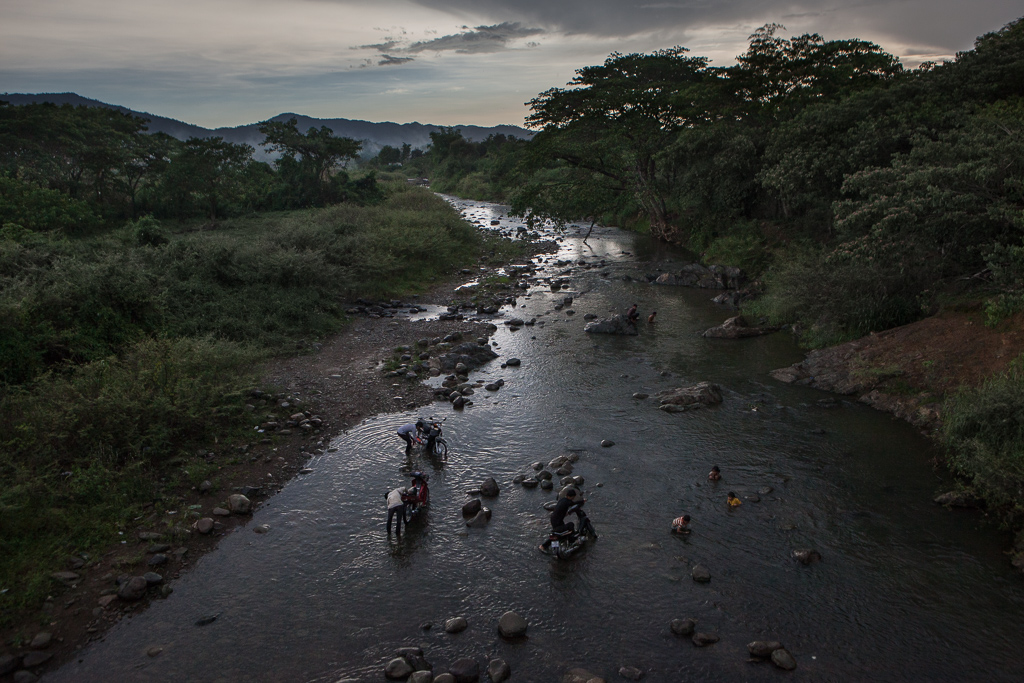
On the road out of Pailin, Cambodia, the signs reflect the perils of life here. On the left, one announces that the field has been cleared of mines, a serious danger in one of the most heavily land-mined countries in the world. On the right, a sign warns parents to keep their children away from cook stoves. Others posted along the road promote rapid diagnostic tests for malaria and quality-assured artemisinin combination therapies (ACTs), part of a huge push to stop the use of fake or substandard malaria medicines.
We're heading to the remote village of Veal Roulem, which means "rainy field" in Khmer, one of several sites where a team from the Mahidol Oxford Tropical Medicine Research Unit in Bangkok is wrapping up a pilot study of a radical approach to eliminating malaria. Known as mass drug administration (MDA), it essentially entails giving an entire village—a so-called malaria hot spot—of healthy people powerful malaria drugs in the hope of wiping out the malaria parasite Plasmodium falciparum.
It's a "somewhat unpopular, somewhat controversial" strategy, says Tom Peto, a co-leader with Rupam Tripura of the study, which is being done in collaboration with the Cambodian national malaria program. And it is the job of Chhoeun Heng, who is widely known as Mr. Heng, to sell it to an understandably suspicious community.
When we pull up to a house that does double duty as a field office and sometimes dormitory for the Mahidol team, a small girl runs out and jumps into Mr. Heng's arms. He laughs and carries her to the outdoor kitchen, where her adoptive parents, farmers in their 50s, are sitting in the shade. Like almost every-one in the village, they were conscripted into the Khmer Rouge, and the mother lost a leg when she stepped on a landmine bringing food to the battlefield in 1983. After 2 decades in the province, Mr. Heng still marvels at people's lack of bitterness. Laughter comes easily as the three catch up over a lunch of omelets and rice.
It's a far cry from how the team was received about a year earlier, when they arrived to launch their study. "Some thought we were here to test medicines on them, and they would die in a year or two," says Mr. Heng, a Cambodian nurse who worked in a refugee camp before signing on with the Mahidol group to head community recruiting. HIV/AIDS was a fear: About 100 people in the same province had recently been infected when an unlicensed doctor, since convicted, reused dirty needles, according to press reports. The villagers also worried that they would be weakened by frequent blood draws.
The team had already set up shop in another village. But they decided to relocate when the rumors here threatened to scuttle the entire project. "We came here to build trust," Mr. Heng says. During the study, the team would stay in the village for 15 to 20 days at a stretch. Other times they would be stranded here when swollen rivers rose too high to ford and washed away bridges.
The study is similar to a clinical trial the Mahidol group recently completed along the Thai/Myanmar border. Volunteers are given the standard 3-day course of an ACT 1 month apart for 3 months, whether or not they have malaria. At baseline and every 3 months after for a year, the researchers draw blood from a vein in the arm and then send the samples to Bangkok for analysis. The hypothesis is that if, after treatment, the parasites are gone from almost all the village's population, the cycle of transmission will be broken.
To get people on board, the team visited village leaders, accompanied by officials from the local health department and the governor's office. Then came a series of community meetings to explain the study; informed consent was obtained house by house. Several evenings Mr. Heng and the crew brought in bands and dancers or embarrassed themselves singing karaoke.
Enrollment in the first round was an impressive 90%. But trust proved fragile, Mr. Heng says. Many villagers caught colds. Others complained of weakness and nausea, and they, too, blamed the drug. Enrollment in the second round dropped to 72%.
The team redoubled its efforts, holding focus groups with women, who make the decisions about health in a family. At community meetings, they refined their message. And they brought in well-respected authorities—the police, the army, and border guards—to vouch for them. Buddhist monks blessed the project. In round three, enrollment hit 85%.
Final results aren't in yet, but one thing is already abundantly clear, Peto says: "MDA is not impossible, but it is not a trivial thing."




